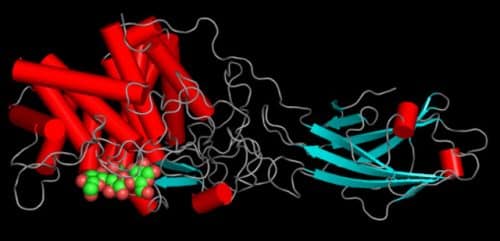The Procter & Gamble company (P&G) has developed detergents whose active ingredient also allows effective cleaning in cold water inspired by the fish of the Baltic Sea

By: Yossi Cohen
Washing clothes is still done, for the most part, in hot water, in an inefficient way that is not environmentally friendly, and while wasting a lot of energy. To illustrate: in each washing cycle 75% of the energy consumed comes from heating the water. In addition, washing in cold water has the advantage that it preserves the colors of the clothes and slows down their wear and shrinkage.
It is known that washing in hot water is effective in cleaning stains, because in addition to detergents (soap) and the mechanical energy of the washing machine, the heat of the water also contributes to the removal of dirt. Until recently, most laundry detergents were intended for use in hot water, but with the increase in environmental awareness, manufacturers have developed detergents that are effective in cold water. A fundamental problem that had to be solved was that surfactants, which are actually the active ingredient in the detergents themselves, do not work effectively in cold water and do not remove the dirt, which consists of oils, starches and proteins.
In order to overcome the non-functioning of the scrubbers in cold water, the P&G chemists developed a new formulation of detergents, which also includes the addition of enzymes-proteins that accelerate chemical reactions, which help in the process of dissolving the greasy stains, and are washed away by the scrubbers.
Amazingly, the P&G chemists came up with the idea of using enzymes as efficient lipid and protein decomposers at low temperatures inspired by organisms living in cold water, and using enzymes in the process of digesting proteins and fats.
The cold temperatures at the South Pole would have made any animal slow and clumsy, so it would have been vulnerable to predators. And yet we see that the fish living in the poles are fast and active. How?
A study that examined the structure of the enzyme lactate dehydrogenase LDH - (an enzyme found in almost every organism and active in the process of cellular respiration) in a fish living in Arctic waters, compared to the structure of an enzyme taken from a fish originating from the Pacific Ocean, revealed that the structure of the active site is the same in both enzymes, but there is a difference in the sequence of amino acids found in the "tail" of the enzyme, causing the enzyme from the cold source to be more flexible, so that the active site is more exposed to the substrate, and the chance of an enzyme-substrate meeting increases, despite the slow movement of the molecules at low temperatures. In addition to the special structure of the enzymes, the South Pole fish are also equipped with special proteins that prevent freezing.
The result of the research - washing powder that contains enzymes with a similar function to the enzymes found in Arctic sea fish, for example, Tide Cold Water Clean, Arm & Hammer Cold Water, Purex Coldwater
In addition to the advantage of these enzymes - to act in cold water - their part in the formulation of the detergent is very low (0.4-0.8wt%), hence their economic advantage. The enzymes are also extremely resistant to the extreme environmental conditions of the washing water (such as a pH of 8-10.5).
It should be noted that the manufacturers of washing machines, such as Whirlpool for example, joined in changing this trend and began developing machines adapted for washing with detergents designed for cold water. For example, you can mention the Whirlpool Maytag Bravos XL washing machine.

2 תגובות
Hello, I am a biology teacher. My students are engaged in a research problem on the effect of temperature on enzyme activity in washing powder. The goal is to reach the optimal temperature for that enzyme
I would appreciate it if you could get more information about biomimicry. Has it been used and if so, in which washing powders can you find them on the shelves in the supermarket.
Hello, I would be happy to receive a reference to the sources for this interesting article? The enzyme they use for washing is LDH?
Thanks